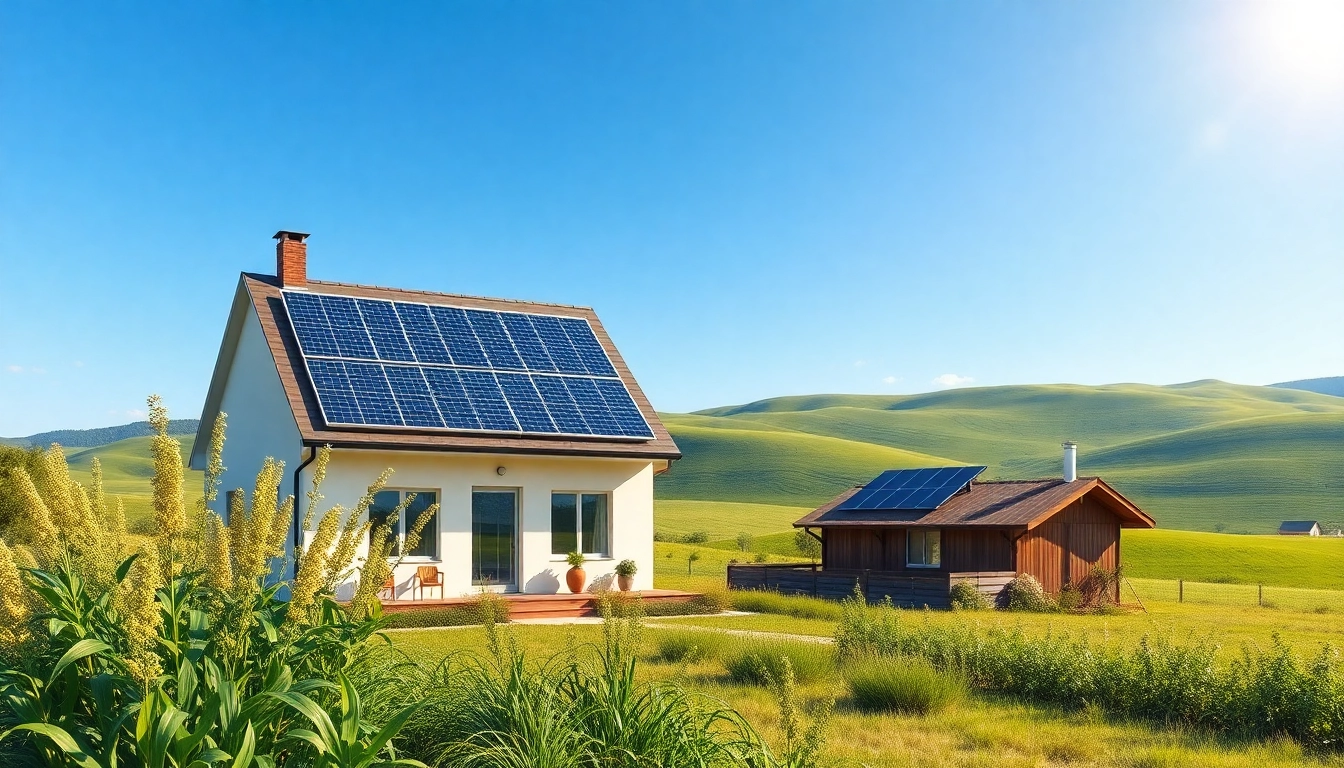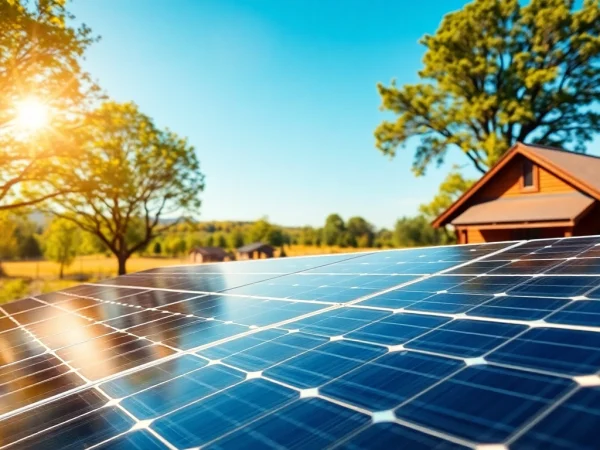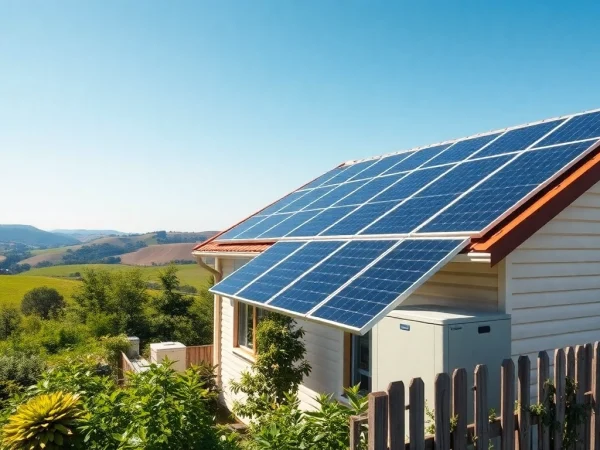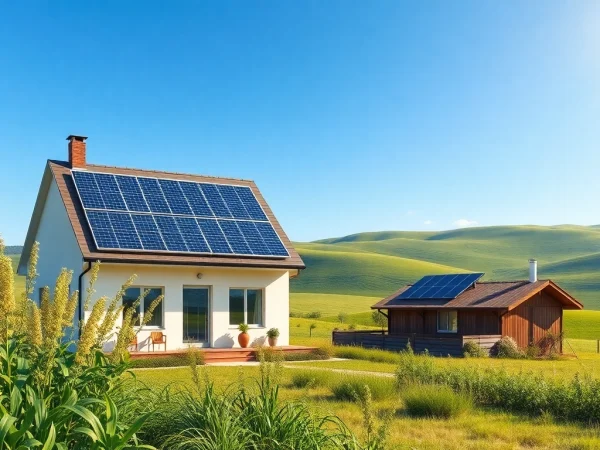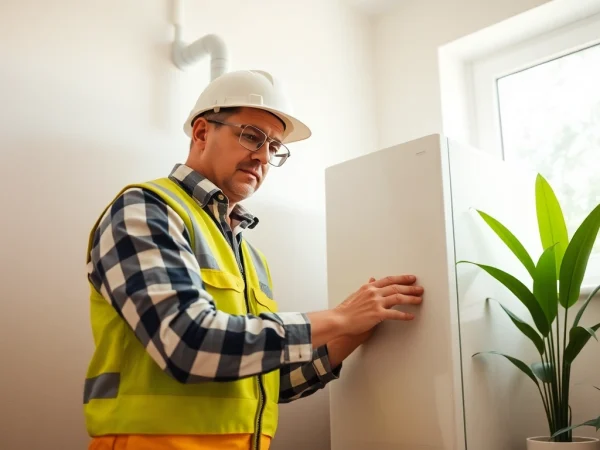10 Essential Benefits of an Off Grid Home Solar System for Sustainable Living
Understanding Off Grid Home Solar Systems
What is an Off Grid Home Solar System?
An off grid home solar system is an independent energy system that harnesses solar energy to generate power for residential use without relying on a traditional utility grid. This setup is increasingly popular among homeowners who seek energy self-sufficiency, especially in regions where grid connectivity is unreliable or non-existent. Off grid systems can vary significantly in size, complexity, and storage capabilities, catering to diverse energy needs and preferences.
Components of Off Grid Solar Systems
A typical off grid home solar system comprises several essential components, each playing a crucial role in energy generation and management. These components include:
- Solar Panels: The primary component that converts sunlight into electricity. Off grid systems often utilize high-efficiency photovoltaic (PV) panels that can withstand varying environmental conditions.
- Charge Controller: This device regulates the voltage and current coming from the solar panels to the batteries, preventing overcharging and extending battery life.
- Batteries: Energy storage is vital in off grid systems, with batteries storing the solar energy produced for use during the night or cloudy days. Lithium-ion and lead-acid batteries are common choices.
- Inverter: This device converts the direct current (DC) electricity generated by solar panels into alternating current (AC), which is usable by standard household devices.
- Backup Generator (optional): Some systems include a generator that can provide additional power during extended periods of low sunlight or high energy demand.
How Off Grid Systems Work Seamlessly
Off grid solar systems operate on a straightforward principle: capture sunlight, convert it into electricity, store it for later use, and provide power to the home. During the day, solar panels generate electricity, which is either used immediately or sent to charge the batteries. The charge controller ensures that the batteries receive the appropriate amount of charge without being overcharged.
When energy is needed, the inverter converts the stored DC energy back into AC, allowing homeowners to power their appliances. In periods of increased energy demand or cloudy weather, homeowners can rely on stored energy from batteries or a backup generator, ensuring a continuous power supply throughout the day and night.
Benefits of Going Off Grid
Environmental Impact of Off Grid Solutions
One of the foremost advantages of off grid solar systems is their positive environmental impact. By harnessing renewable energy, homeowners significantly reduce their carbon footprint and reliance on fossil fuels. Solar energy is clean, abundant, and sustainable, making it an ideal choice for eco-conscious individuals striving to mitigate climate change.
Moreover, off grid systems encourage responsible energy consumption. Homeowners often become more aware of their energy usage, leading to behaviors that reduce waste and promote efficiency. This proactive approach can inspire communities to adopt renewable energy technologies, promoting a broader shift towards sustainability.
Cost Savings Over Time
While the initial investment in an off grid solar system can be significant, the long-term savings can be substantial. By generating their own electricity, homeowners can eliminate their electricity bills, saving thousands of dollars over the system’s lifespan. Once the system is paid off, energy generation costs are virtually zero, aside from minimal maintenance expenditures.
In many areas, local and federal government incentives, rebates, and tax credits can further reduce the total cost of ownership, making off grid solutions even more financially accessible. With stable energy prices, homeowners can also hedge against rising utility costs, ensuring predictable expenses.
Energy Independence and Security
Off grid solar systems grant homeowners energy independence, allowing them to produce their own power without dependency on external sources. This independence is particularly beneficial in regions with unreliable grid service, as it protects against outages and fluctuations in supply.
In addition to increasing security from power outages, off grid systems are often designed to be scalable, allowing homeowners to increase their capacity as needed by adding more solar panels or batteries. This flexibility ensures that energy production can keep pace with growing energy demands due to lifestyle changes, technological advancements, or expanding households.
Common Challenges with Off Grid Systems
Initial Setup Costs and Financial Planning
The initial cost of setting up an off grid solar system can be daunting for many homeowners. Prices vary widely based on system size, components chosen, and installation complexity. It’s essential to perform a thorough financial analysis, considering long-term savings versus upfront investments.
Homeowners should evaluate financing options, including solar loans and leases, which often require little to no upfront payment. Additionally, potential savings from lower utility bills and available incentives should be factored into financial planning to provide a clearer picture of the investment’s return.
Maintenance Requirements
While off grid solar systems are generally low-maintenance, they do require regular inspections and maintenance to ensure optimal performance and longevity. Homeowners should develop a maintenance schedule that includes cleaning solar panels, checking battery performance, and inspecting wiring and connections.
It’s advisable to consult a professional for system upkeep periodically, as they can offer expert insights into potential issues and perform any necessary repairs or upgrades. Regular maintenance can prevent costly breakdowns and extend the overall life of the system.
Energy Production and Storage Considerations
One of the most significant challenges for off grid homeowners is ensuring sufficient energy production and storage capacity to meet their needs, especially during periods of low solar exposure. It is critical to conduct a thorough assessment of energy consumption to accurately size the solar panel and battery systems.
Weather patterns, geographical location, and seasonal changes should all be taken into account when designing an off grid system. Homeowners can use energy monitoring tools to assess their consumption patterns and make informed adjustments to their systems, ensuring a reliable power supply year-round.
Choosing the Right Off Grid Solar System
Determining Your Energy Needs
The first step in selecting the right off grid solar system is to accurately determine your energy needs. This involves auditing your current energy use, factoring in seasonal variations and any expected changes in household consumption over time.
Start by listing all your household appliances, their power ratings in watts, and the number of hours each is used daily. This will give you a comprehensive view of your energy needs, making it easier to size your solar and battery systems effectively.
Evaluating Solar Panel Options
Not all solar panels are created equal. When selecting solar panels for off grid systems, consider factors such as efficiency, durability, warranty, and cost. Monocrystalline panels are typically more efficient and have a longer lifespan than their polycrystalline counterparts, but they also tend to come at a higher price point.
Additionally, research the reputations of different manufacturers and look for products that have undergone rigorous testing for performance under various environmental conditions. Review customer feedback and seek out reputable installers or suppliers for recommendations to ensure you are making a sound investment in your solar technology.
Battery Storage Solutions
Battery selection is another critical factor in off grid solar systems, as they enable energy storage for use during non-sunny periods. Homeowners can choose between various types, including lithium-ion, lead-acid, and flow batteries. Each has its own advantages and limitations regarding cost, lifespan, efficiency, and maintenance needs.
For instance, lithium-ion batteries are more efficient over their lifecycle and require less maintenance compared to lead-acid batteries, but have a higher upfront cost. Homeowners should assess their budget, energy consumption patterns, and long-term ambitions when determining the best battery solution for their off grid system.
Maximizing Efficiency of Your Off Grid System
Monitoring Energy Use
Effective energy management is vital for the success of your off grid solar system. Monitoring your energy use will help identify usage patterns, enabling you to make informed decisions on consumption and energy-saving practices. Consider using smart meters or home energy management systems that provide real-time data on energy production and usage.
By using this information, you can adjust your habits, prioritize energy-efficient appliances, and actively reduce consumption during peak periods, optimizing the performance of your solar system.
Regular Maintenance Tips
Homeowners can prolong the life of their off grid solar systems through proactive maintenance. Here are a few tips:
- Clean Solar Panels: Dust, dirt, and debris can reduce panel efficiency; clean them several times a year or as necessary.
- Inspect Wiring and Connections: Regularly check for loose or corroded connections, especially after severe weather.
- Monitor Battery Health: Keep an eye on battery performance, and maintain proper water levels for flooded lead-acid batteries.
Integrating Other Renewable Energy Sources
To enhance the reliability and efficiency of an off grid solar system, integrating additional renewable energy sources, such as wind or micro-hydro power, can be beneficial. These hybrid systems diversify energy production and provide redundancy in energy supply, ensuring homeowners remain powered when solar generation is inadequate.
For instance, a small wind turbine can supplement solar energy production, especially in areas with consistent wind. Similarly, micro-hydro systems can be effective in regions with flowing water sources. Homeowners should consider local resources and regulations when exploring these options, ensuring they complement their solar setups while maximizing potential energy generation.
